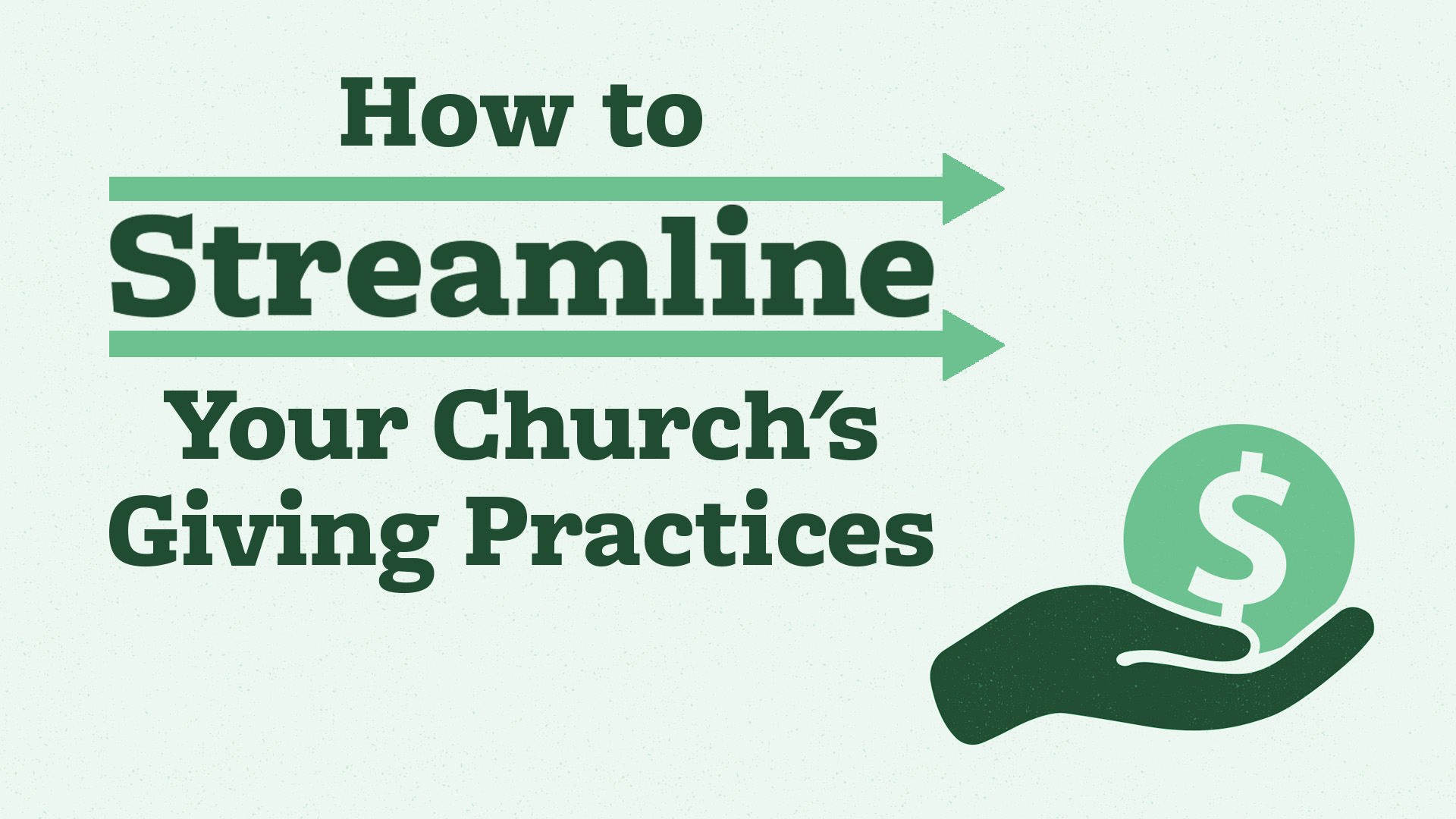
Offerings, or financial giving, can be a tricky thing to talk about in the church. Yet it’s a vital part of ministry and people’s life of faith.
Scripture has a great deal to say about offerings, tithing, generosity, and God’s provision for His people in both the Old and New Testaments. It’s not about giving God what He needs; rather, it’s a practice God uses to teach and cultivate in us trust in and dependence on Him.
So what exactly is an offering? It is giving back to God a portion of what He has generously given to us. The words tithe and offering are sometimes used interchangeably. More specifically, however, a tithe is an offering amounting to ten percent of one’s income.
When it comes to the logistical nature of offerings in the church, we find several common practices for giving, tracking, and managing. Let’s take a look.
Modes of Giving
The collection plate or basket
Whether stationed at a particular spot in the church (by the door) or passed through the pews or seating, this way of collecting offerings was once the standard. It is often part of the worship service, emphasizing the spiritual weight of giving or tithing.
Offering envelopes
Sometimes paired with a collection plate or basket, offering envelopes can be preprinted for weekly giving, with each household assigned a specific number to simplify the tracking process. Churches also offer more general envelopes for people who are visiting or don’t yet have their own set. Envelopes can be a helpful physical reminder of offerings in the home and allow for givers to more easily designate their funds. With most sets providing an envelope for each week (along with special services and holidays), there is potential for waste if a household gives on a different interval, based on when their income is received.
Online/eGiving
Electronic giving poses several benefits including the ability to set up regularly occurring withdrawals, make one-time gifts, and utilize a text-to-give feature. On the accounting side, automated reports pulled from the giving data simplify that process.
On the other side of the coin, a practice of “set it and forget it” has the potential to, well, take the thinking out of giving. This prompts greater intentionality in modeling and discussing financial stewardship and generosity, especially with younger generations.
Counting and Tracking Offerings
Paper ledger
This analog option is pretty straightforward and requires little in the way of equipment. A simple ledger book or sheet, pen, and calculator are all you need to record and tally offerings for a given week or special event.
Excel spreadsheet
Introducing digital technology into the mix, Excel or other spreadsheet programs can organize the data in a way that makes sense for your leadership and congregation. This also offers the benefit of seeing the history of changes made to the documents via a digital trail, for added accountability.
Church management software
Church management software, or CMS, provides the ability to sync a congregation’s member database with accounting software designed specifically for use in churches. This simplifies the process of recording offerings, along with giving statements and financial reports. Another church favorite feature of this software is a secure audit trail, detailing which user made a particular change and providing a layer of accountability.
Regardless of the method used to record and track giving, establishing and enforcing policies and procedures as to the who and how of carrying out these tasks is essential to good congregational stewardship.
Accountability and Transparency
Establish regularly updated outlets for keeping members and stakeholders informed of the financial status of the congregation. Some churches publish a simple two-line report of weekly giving and year-to-date expenses in the bulletin. More detailed budgets, income, and expense reports are distributed at voters’ meetings. An annual report not only shows facts and figures but can also be a place to share stories of how offerings are used across various ministries.
A word of caution: be aware of what is published and accessible to a wide or public audience (online, shared verbally via livestream, etc.).
Saying Thanks and Telling Stories
Speaking of sharing stories related to financial giving in the church, the annual report mentioned above is a great place to start this practice, but don’t stop there! Use communication avenues such as your paper or digital newsletters, verbal announcements, social media pages, and even bulletin boards to share a word of thanks, event wrap-ups, or impact quotes on an ongoing basis.
Freedom to Love and Serve
Establishing and maintaining a strong offering process—from giving to counting to recording and reporting and beyond—supports a congregation’s ability to freely love and serve their neighbor. Good stewardship of what God has graciously given allows churches to respond to the needs of members and those in the community, care for their workers, fund educational ministries that nurture faith, and address maintenance concerns.
























